You might think you’re well-versed in Mexican cuisine, especially if your weekly taco night includes hard shells, nacho cheese, and a generous scoop of sour cream. But here’s the truth: much of what Americans consider “Mexican food” would leave actual Mexican chefs scratching their heads.
From deep-fried burritos to ground beef tacos, the U.S. has taken Mexico’s rich culinary traditions and reimagined them with a heavy dose of cheese, shortcuts, and creative liberties. While these Tex-Mex and fast-food favorites may be delicious in their own right, they bear little resemblance to the real-deal dishes served in Mexico’s mercados, street carts, or abuelita’s kitchen.
Some of these inventions came from the borderlands — a cultural blend of flavors and practicality. Others were dreamed up in corporate test kitchens and family dinner tables with cans of soup and taco seasoning. And while the results have earned loyal fans (we see you, chimichanga lovers), they reflect more about America’s obsession with convenience, indulgence, and fusion than about authentic Mexican culinary roots.
So, what exactly is not Mexican? It turns out, quite a lot. From the beloved seven-layer dip at Super Bowl parties to that sizzling fajita platter at your favorite chain restaurant, many of these so-called Mexican dishes are pure Americana dressed in a sombrero.
In this article, we’re setting the record straight. Whether you’re a curious foodie or a die-hard taco enthusiast, get ready to learn which dishes belong to Mexico—and which ones are proudly, unapologetically, and often hilariously… not.
Spoiler alert: if it’s stuffed with French fries, drenched in queso, or topped with a mountain of sour cream, chances are it didn’t come from Mexico.
1. Chimichangas
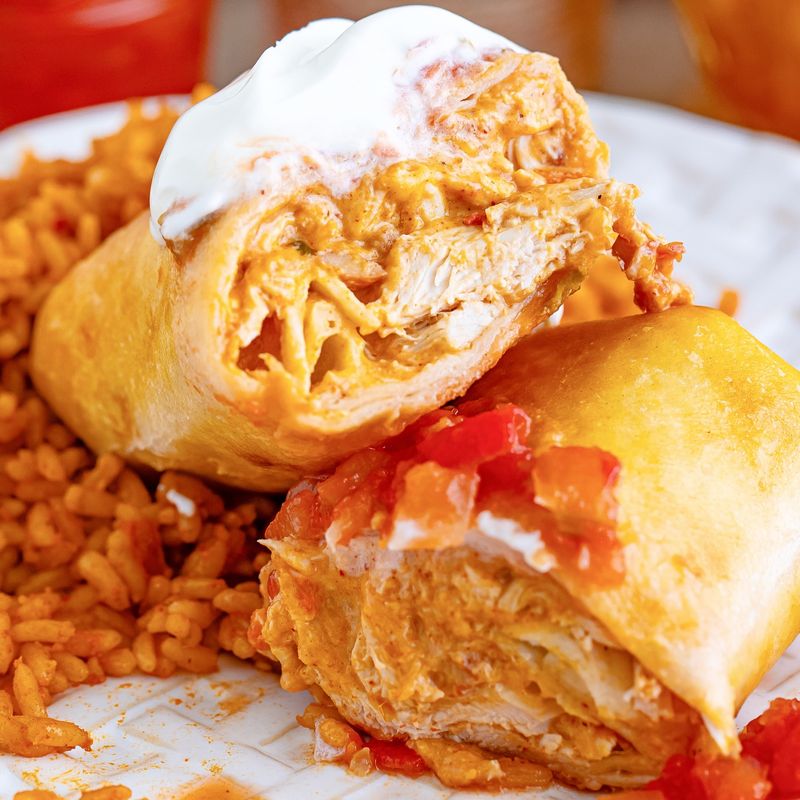
Legend has it that a burrito accidentally fell into a deep fryer at an Arizona restaurant, creating what we now call the chimichanga. The cook was about to yell a Spanish swear word but quickly changed it to “chimichanga” instead!
Real Mexican cuisine doesn’t include these crispy, deep-fried burritos. While they’re popular in border states and Tex-Mex restaurants across America, you’d be hard-pressed to find them in Mexico City or Oaxaca.
Mexicans do have many fried foods, but the chimichanga remains proudly Arizonan – a delicious mistake that took on a life of its own.
2. Hard Shell Tacos
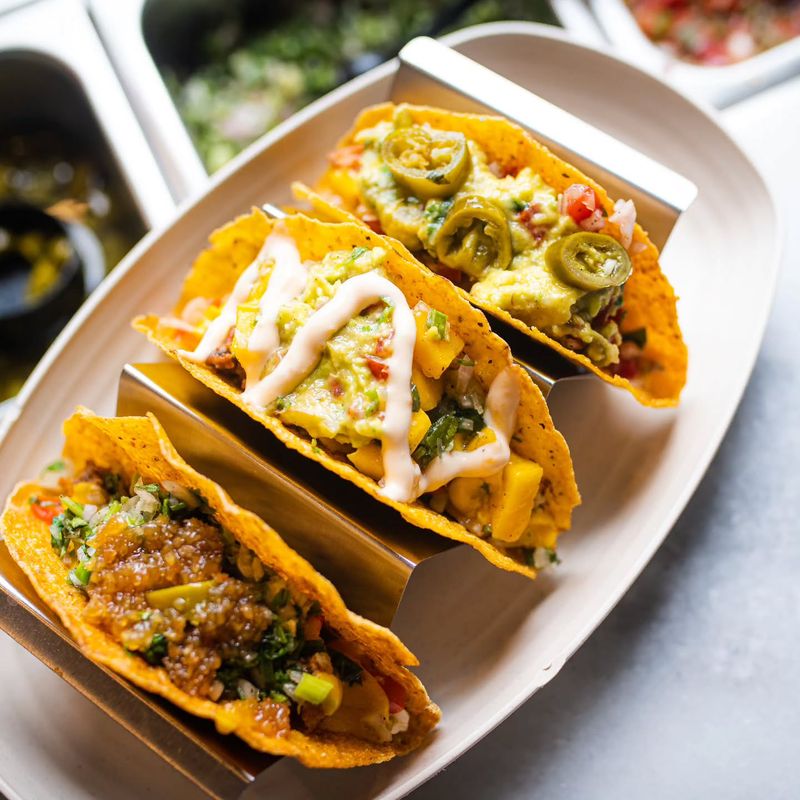
Remember those yellow, U-shaped crunchy taco shells from your childhood? Pure American invention. Glen Bell (yes, of Taco Bell fame) popularized these pre-formed shells in the 1950s as a way to mass-produce tacos quickly.
Authentic Mexican tacos use soft corn tortillas that are sometimes quickly fried but remain pliable. They’re typically small, double-layered, and topped simply with meat, onions, cilantro, and perhaps a salsa.
The hard shell version with ground beef, lettuce, and shredded cheese is about as Mexican as apple pie – which is to say, not at all!
3. Taco Salad
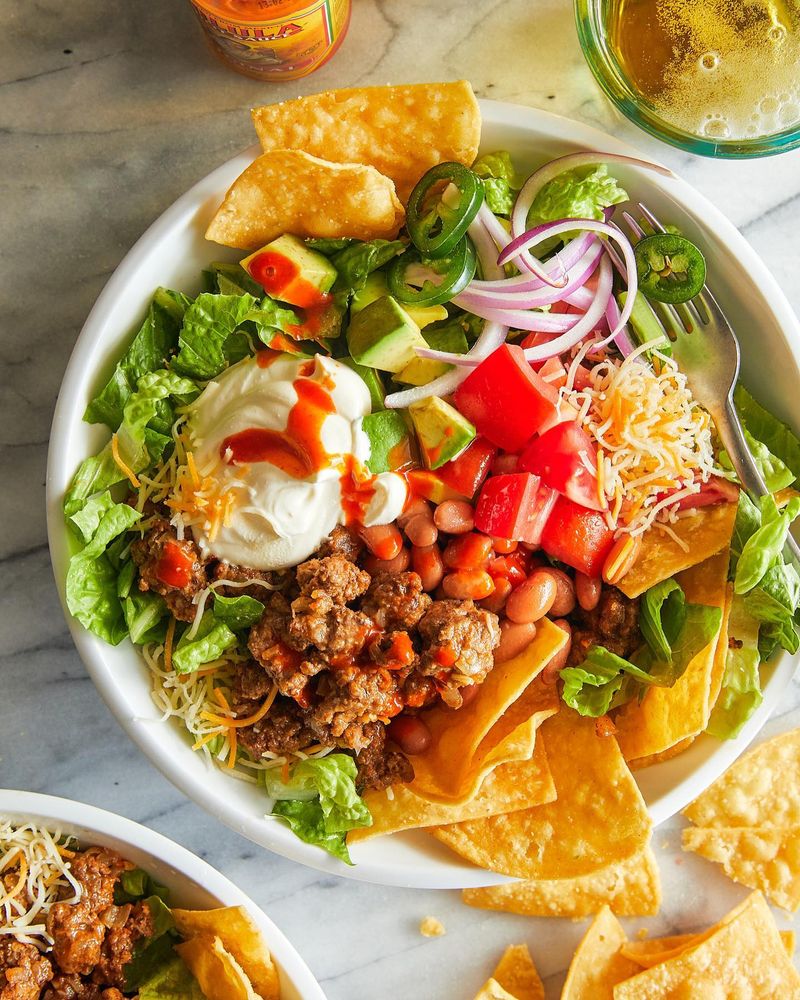
A giant fried tortilla bowl filled with lettuce, seasoned ground beef, cheese, and sour cream? Mexican cuisine has nothing remotely like this Tex-Mex creation. The taco salad emerged in the 1960s as American restaurants tried to capitalize on the growing popularity of Mexican flavors.
The concept of a salad served in an edible bowl would seem downright bizarre in Mexico. Traditional Mexican salads like ensalada de nopales (cactus salad) bear no resemblance to this American invention.
While delicious in its own right, the taco salad belongs firmly in the category of American comfort food with a south-of-the-border twist.
4. Loaded Nachos
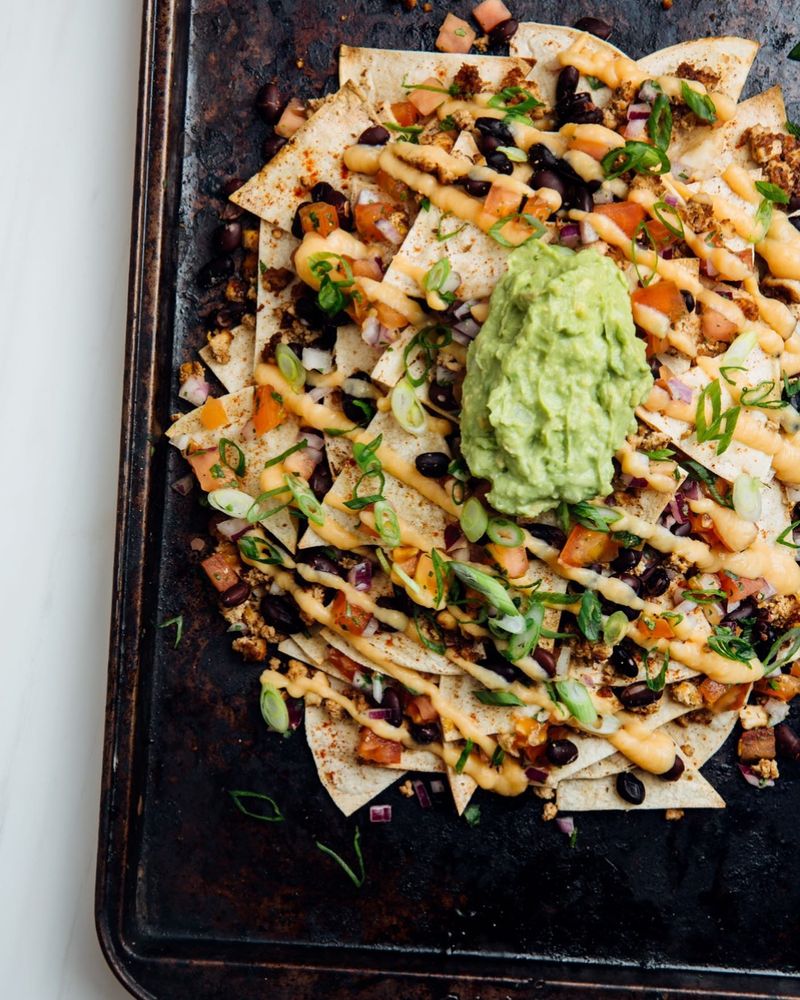
The original nachos were actually created in Mexico by Ignacio “Nacho” Anaya in 1940 when he quickly prepared a snack for American military wives. His version? Simple tortilla chips topped with melted cheese and jalapeños.
Fast forward to modern American nachos: mountains of chips buried under chili, ground beef, refried beans, guacamole, sour cream, olives, and liquid cheese. This supersized version is purely American excess at its finest.
Authentic Mexican botanas (snacks) tend to be much simpler, focusing on quality ingredients rather than quantity and layers of toppings that mask the flavor of each component.
5. Queso Dip
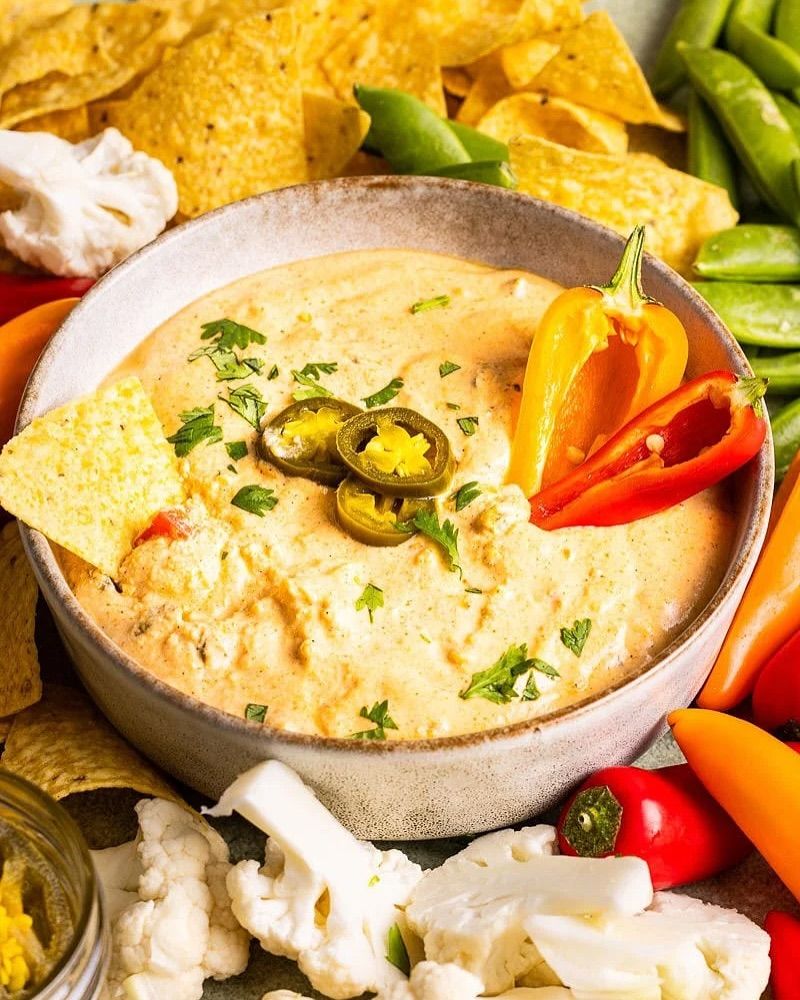
That smooth, yellow cheese dip Americans love to dunk tortilla chips in? You won’t find it at authentic Mexican restaurants. Queso dip (often made with processed cheese like Velveeta mixed with Ro-Tel tomatoes) is a Tex-Mex creation that became popular in the mid-20th century.
Mexican cuisine does feature wonderful cheeses like queso fresco, cotija, and Oaxaca cheese, but they’re typically crumbled or melted directly onto dishes – not served as a separate dipping sauce.
The closest authentic Mexican equivalent might be queso fundido – melted cheese with chorizo or rajas (roasted poblano strips) eaten with tortillas, not chips.
6. Fajitas
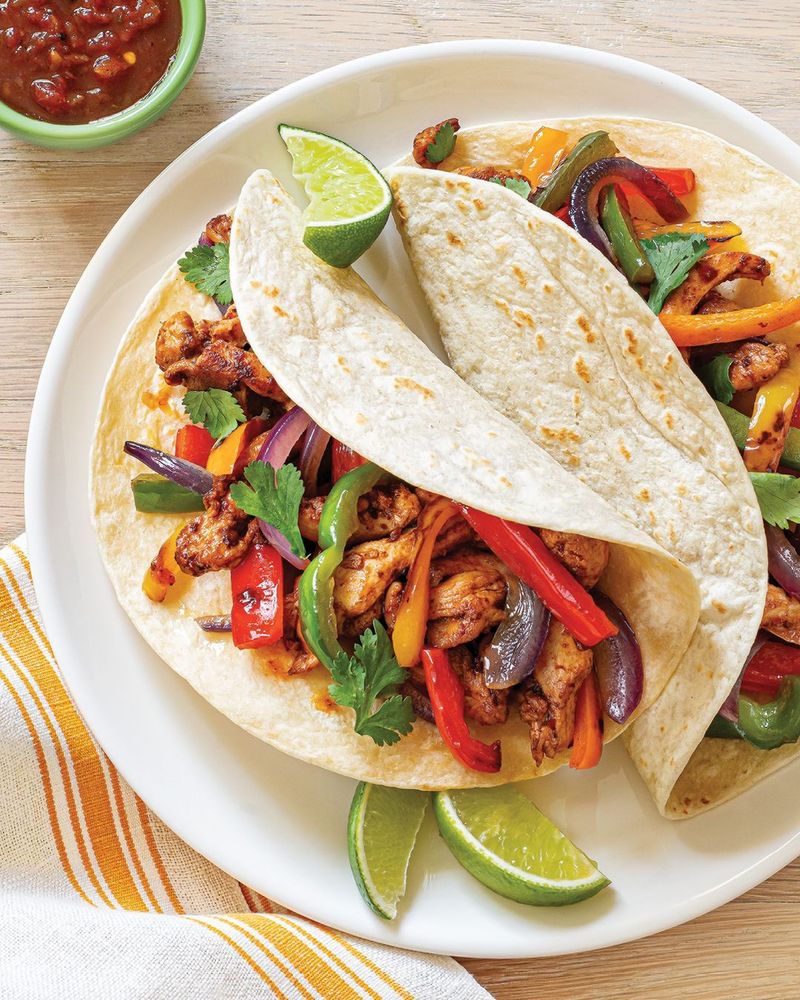
That dramatic sizzling skillet of grilled meat, peppers and onions might scream “Mexican night” to Americans, but fajitas originated with Texas Mexican vaqueros (cowboys). These ranch hands were often paid partly with less desirable beef cuts like skirt steak, which they grilled and wrapped in tortillas.
The commercial fajita as we know it today – with its theatrical presentation and accompanying sides – was popularized in the 1970s in Texas restaurants. The word “fajita” actually refers specifically to grilled skirt steak (from “faja” meaning belt or strip).
While delicious, the fajita platter with its array of toppings is firmly Tex-Mex territory.
7. Breakfast Burritos
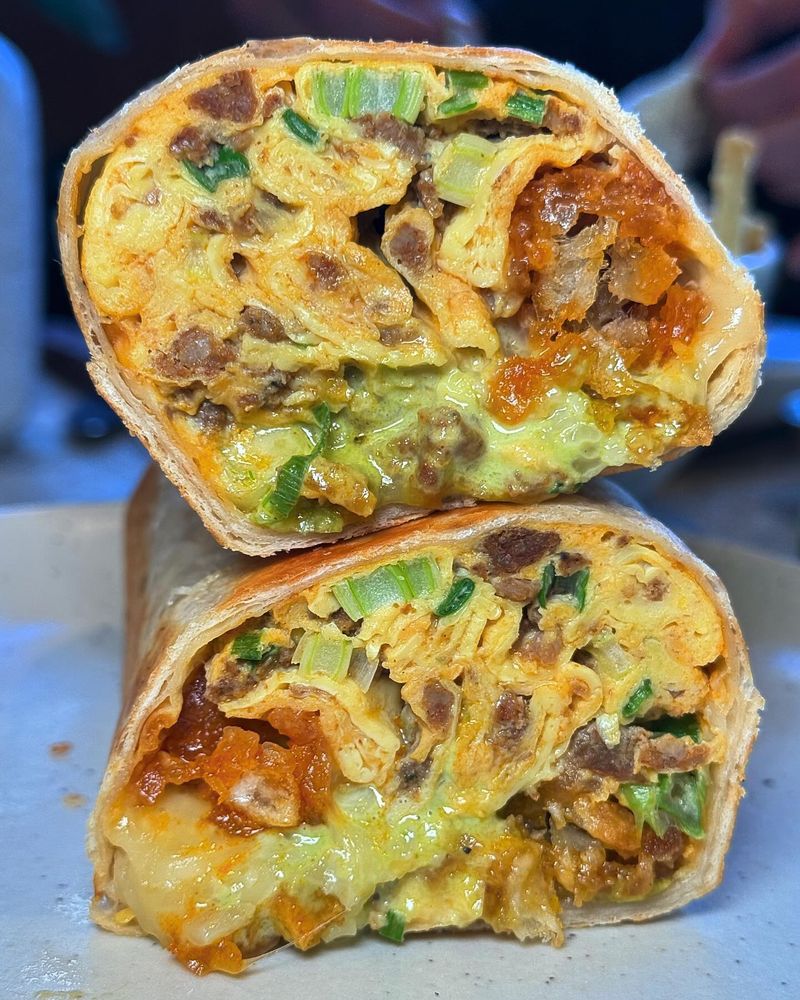
The concept of wrapping scrambled eggs, potatoes, cheese and breakfast meats in a flour tortilla is a distinctly American innovation. While Mexicans certainly eat breakfast (desayuno), traditional morning meals look quite different – think chilaquiles, huevos rancheros, or pan dulce with coffee.
Breakfast burritos likely originated in the American Southwest, possibly New Mexico, in the 1970s. They represent American pragmatism: a portable, handheld breakfast perfect for busy mornings.
The closest Mexican relative might be machaca con huevo (dried beef with eggs) wrapped in a tortilla, but it’s not traditionally assembled as a burrito and certainly doesn’t include hash browns!
8. Seven-Layer Dip
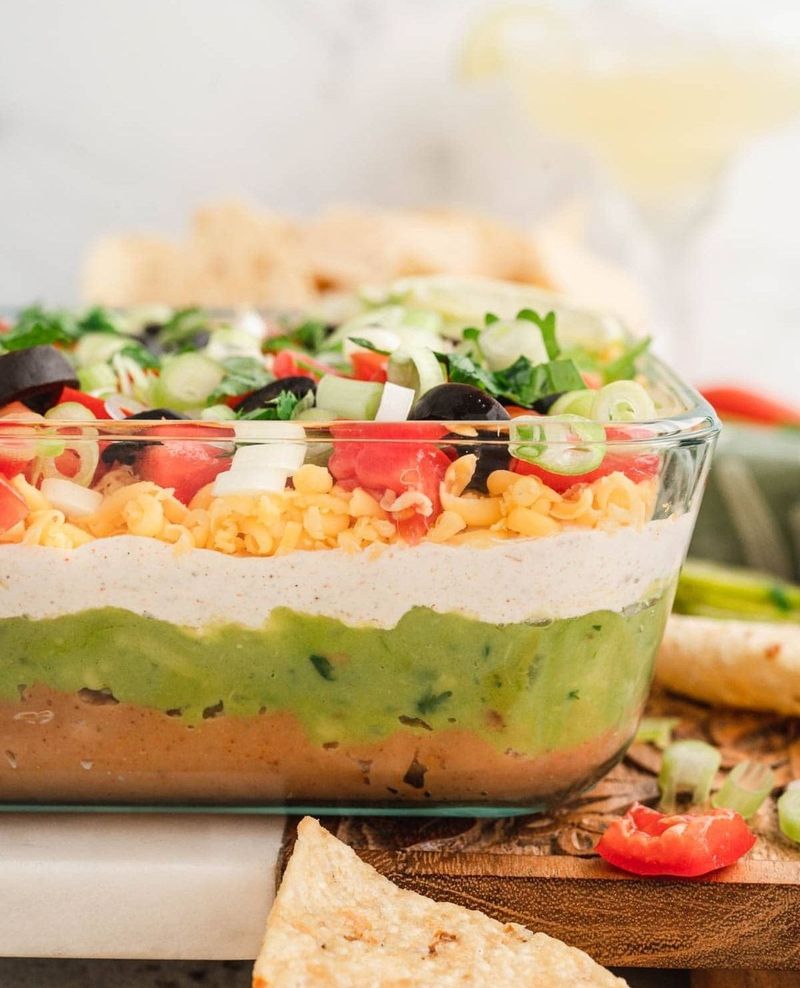
That colorful layered dip showing up at Super Bowl parties nationwide? Not a trace of it in Mexico. Seven-layer dip emerged from American home kitchens in the 1980s as a convenient party food inspired by vague Mexican flavors.
The standard layers – refried beans, sour cream, guacamole, cheese, olives, tomatoes, and lettuce – create a mishmash that’s tasty but completely foreign to Mexican cuisine. Traditional Mexican dips like guacamole or various salsas are served individually, not stacked in a glass dish.
The concept of combining all these ingredients into a single dip would likely puzzle authentic Mexican cooks, who typically prefer letting individual flavors shine.
9. California Burrito
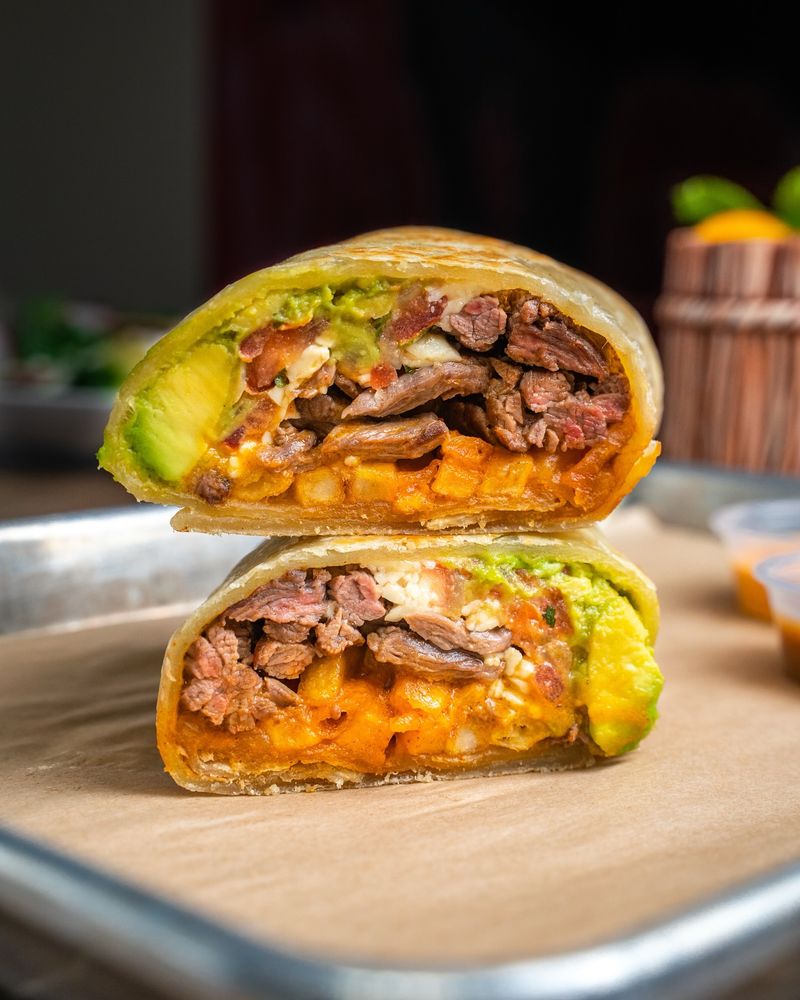
A burrito stuffed with carne asada, French fries, cheese, sour cream, and guacamole sounds delicious – and it is! But this creation is pure San Diego innovation, not Mexican tradition.
The California burrito emerged in the 1980s from taco shops in Southern California, likely catering to hungry surfers looking for portable, filling meals. The addition of French fries inside a burrito would be considered bizarre in Mexico, where potatoes are rarely used this way.
Traditional Mexican burritos (when they appear at all) are much simpler affairs with fewer ingredients and certainly no French fries. This beloved SoCal creation remains a testament to American culinary creativity.
10. Frozen Margarita Slushies
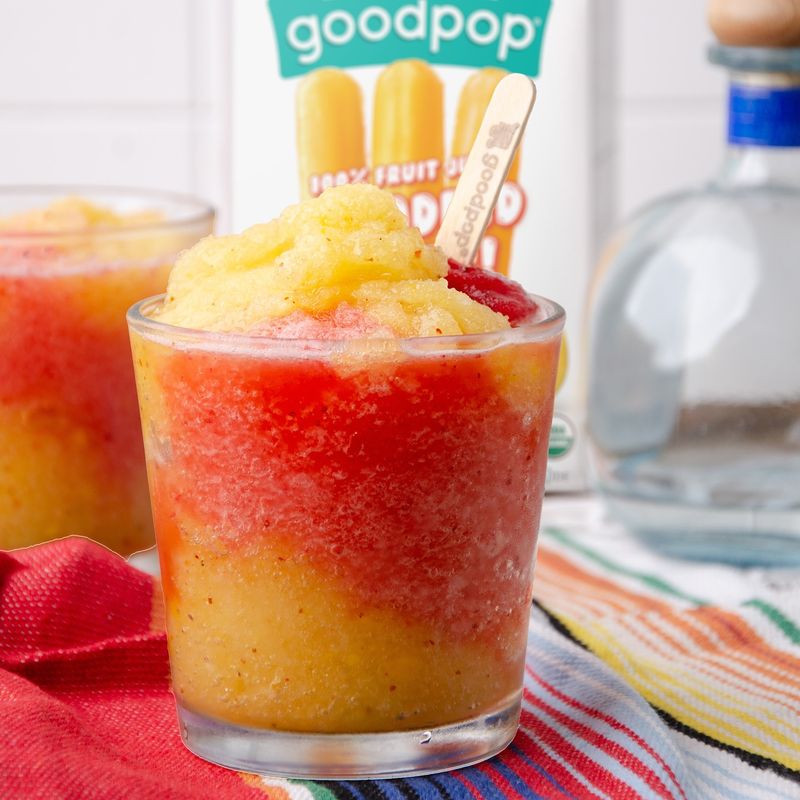
Margarita purists, cover your eyes! Those frozen, neon-colored slushies served in salt-rimmed fishbowl glasses with umbrellas are about as Mexican as skiing. The original margarita is simply tequila, lime juice, and orange liqueur, served on the rocks.
The frozen margarita machine was invented in 1971 by Mariano Martinez, a Dallas restaurant owner who modified a Slurpee machine. This American innovation transformed the cocktail into the resort-style party drink we know today.
Traditional Mexican cantinas serve their tequila straight or in simple cocktails. Those sugary, brain-freeze-inducing concoctions? Pure American vacation fantasy.
11. Cheesy Enchiladas with Cream of Mushroom Soup
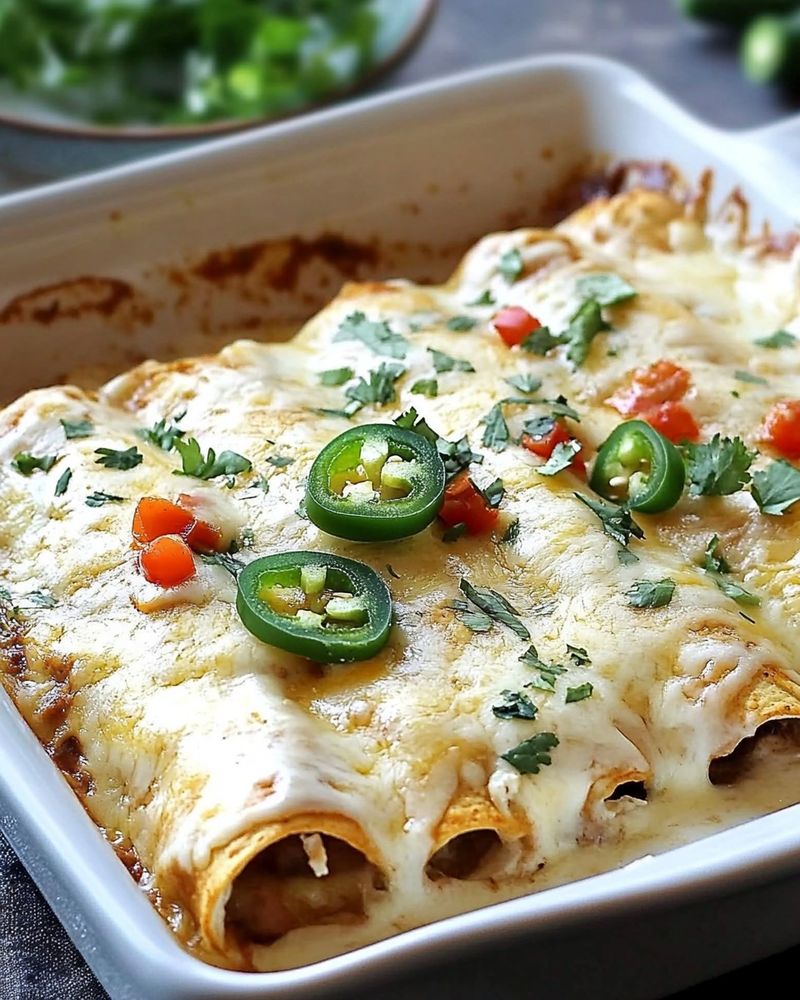
Many American home cooks learned to make “Mexican” enchiladas using canned cream of mushroom soup and yellow cheddar cheese – ingredients you’d never find in an authentic Mexican kitchen! This casserole-style dish emerged from mid-century American convenience cooking.
Real Mexican enchiladas feature corn tortillas dipped in a chile sauce, lightly fried, then rolled around a filling and topped with more sauce. Regional variations abound, from enchiladas verdes to enchiladas potosinas, but none involve condensed soup.
The cheeses used in authentic versions would be Mexican varieties like queso fresco or cotija – never the pre-shredded “Mexican blend” from American supermarkets.
12. Canned Refried Beans
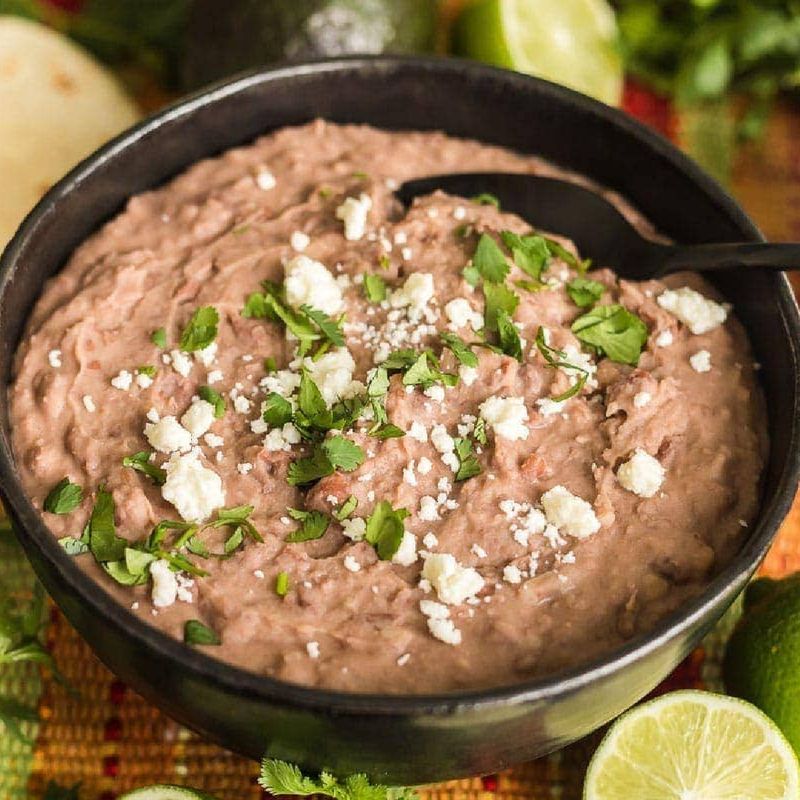
That uniformly smooth, grayish paste from a can labeled “refried beans” bears little resemblance to authentic Mexican frijoles refritos. Traditional Mexican refried beans are made by cooking pinto or black beans until tender, then mashing and frying them in lard with onions and spices.
The result has texture and character – some beans remain partially whole while others are fully mashed. The flavor is rich and complex, not bland and pasty like the canned version Americans grew accustomed to in the mid-20th century.
Beans are indeed a staple in Mexican cuisine, but they’re prepared with care and attention that canned versions simply can’t replicate.
13. Ground Beef Tacos
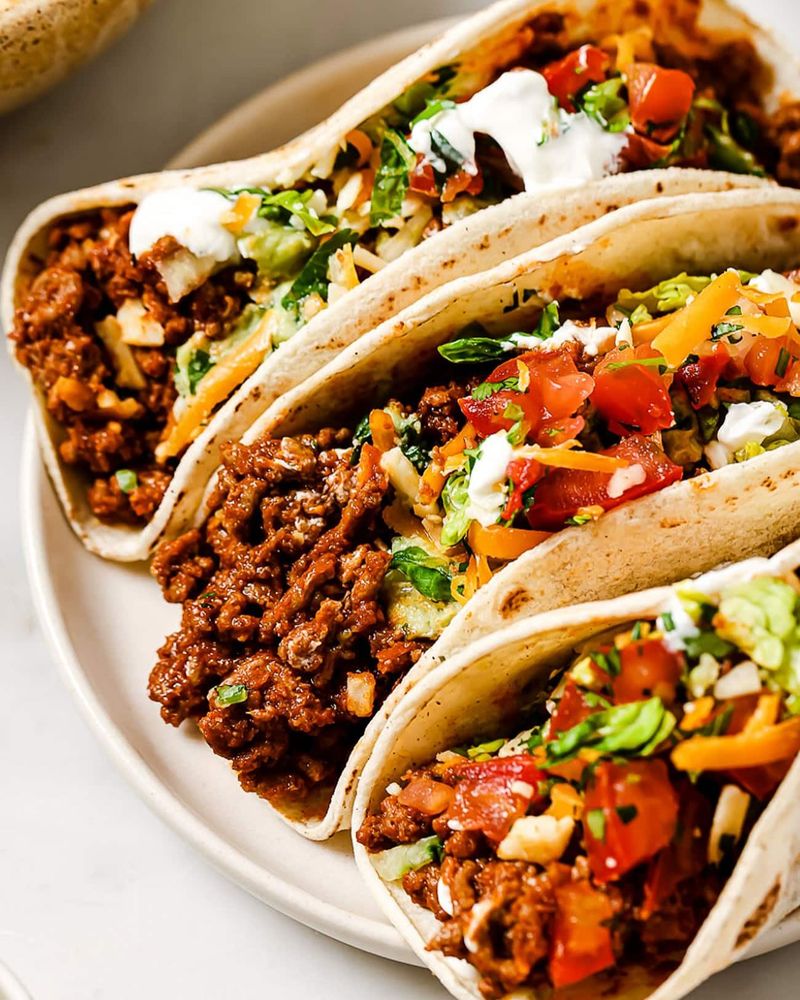
The centerpiece of American “taco night” – seasoned ground beef with that familiar packet of taco seasoning – is nowhere to be found in authentic Mexican taquerias. This Americanized version became popular in the mid-20th century as an easy way to approximate Mexican flavors.
Real Mexican tacos feature specific meat preparations like carne asada (grilled steak), carnitas (slow-cooked pork), al pastor (spit-grilled pork), or barbacoa (steamed meat). The meat is usually sliced or shredded, not ground.
While ground beef tacos can be delicious family fare, they’re firmly in the category of American adaptations rather than authentic Mexican cuisine.
14. Mexican Pizza
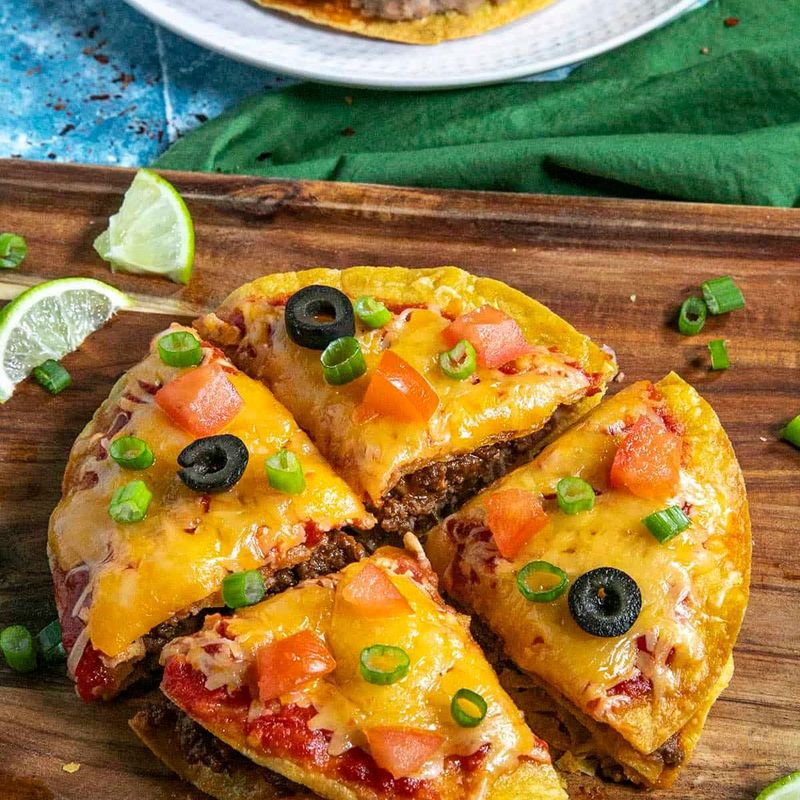
Taco Bell’s famous Mexican Pizza – with its crispy tortillas, refried beans, ground beef, and melted cheese – might have a devoted following, but it has absolutely no roots in Mexican cuisine. This fast-food creation combines Americanized Mexican elements with a pizza-like presentation.
The concept would be completely foreign in Mexico, where flatbread-style dishes don’t feature in traditional cooking. The closest authentic dish might be a tlayuda from Oaxaca – a large, crispy tortilla topped with beans, meat, and cheese – but even this bears little resemblance to the fast-food version.
Mexican Pizza represents American fast-food innovation at its most creative (or sacrilegious, depending on your viewpoint).
15. Sour Cream Overload
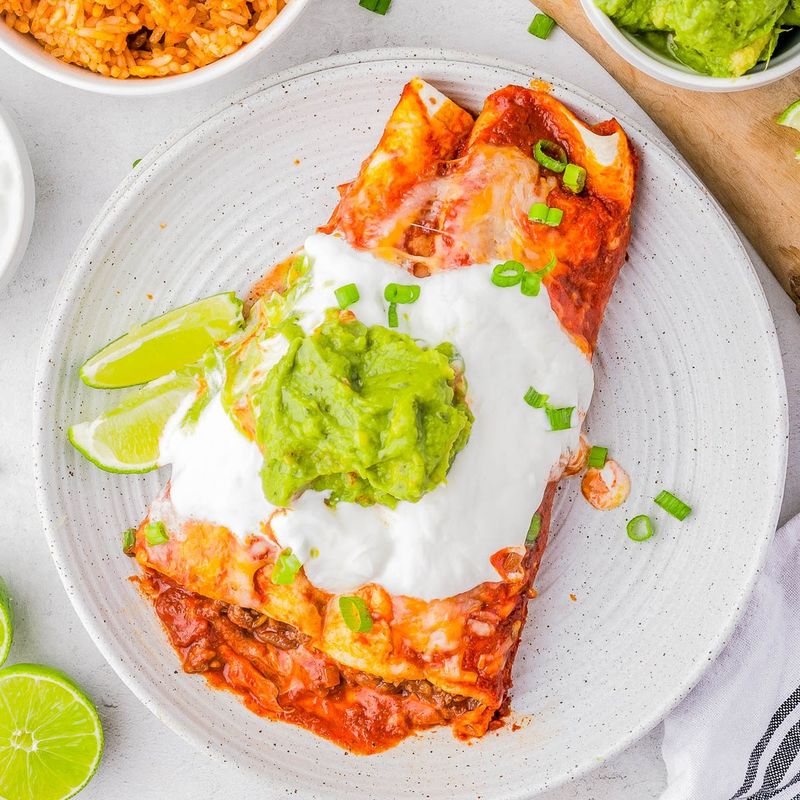
Ever noticed how American “Mexican” restaurants serve every dish with a massive dollop of sour cream? This heavy-handed approach would make authentic Mexican cooks cringe. Mexican crema does exist, but it’s used sparingly as an accent, not as the main event.
Mexican crema is also different from American sour cream – it’s thinner, less tangy, and more like French crème fraîche. It complements spicy dishes without overwhelming them.
The American tendency to smother everything in thick sour cream emerged as restaurants tried to tone down spiciness for sensitive American palates. Unfortunately, this often masks the complex flavors that make Mexican cuisine special.
Leave a comment